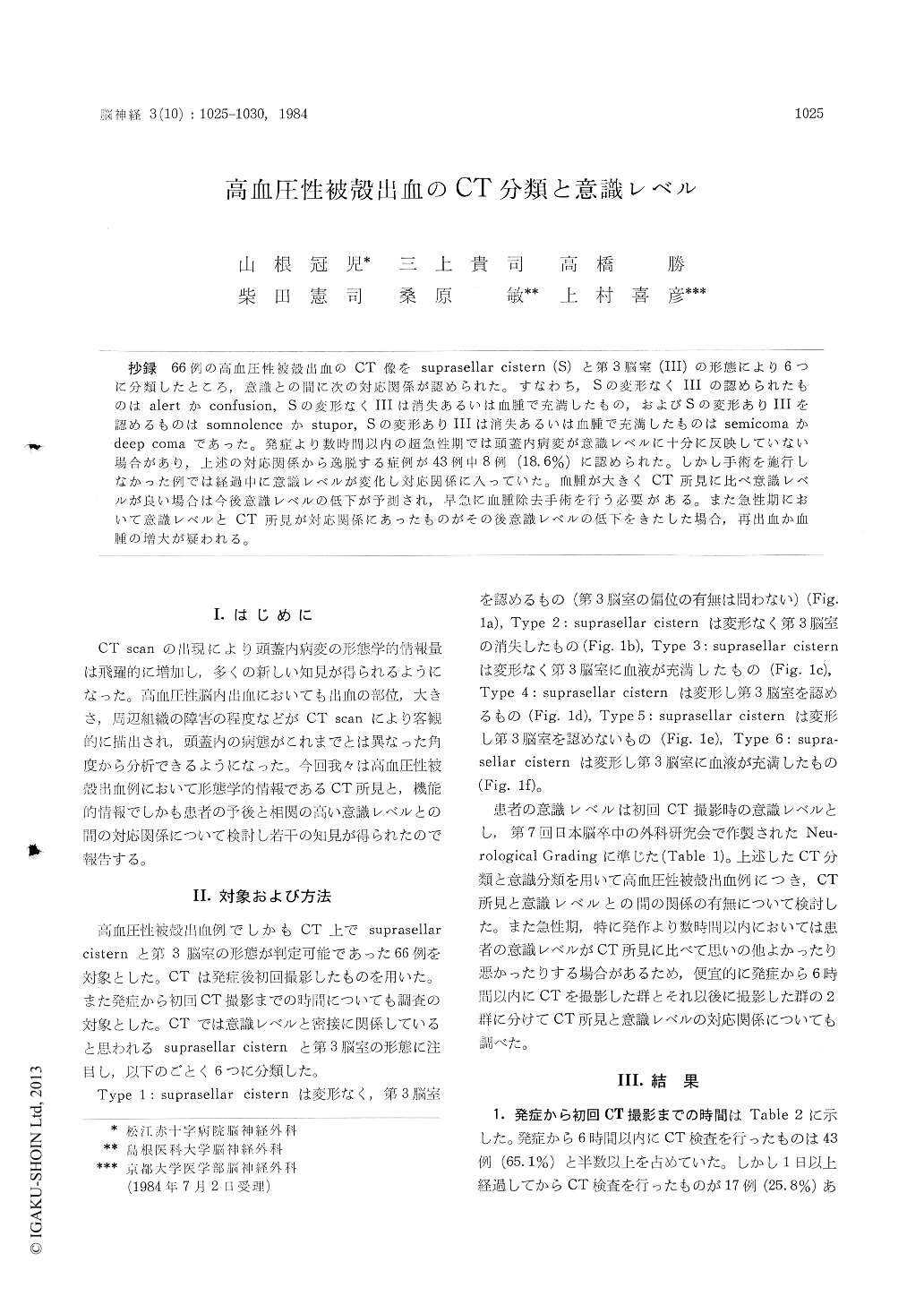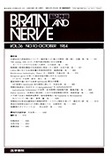Japanese
English
- 有料閲覧
- Abstract 文献概要
- 1ページ目 Look Inside
抄録 66例の高血圧性被殻出血のCT像をsuprasellar cistern (S)と第3脳室(III)の形態により6つに分類したところ,意識との間に次の対応関係が認められた。すなわち,Sの変形なくIIIの認められたものはalertかconfusion,Sの変形なくIIIは消失あるいは血腫で充満したもの,およびSの変形ありIIIを認めるものはsomnolenceかstupor,Sの変形ありIIIは消失あるいは血腫で充満したものはsemicomaかdeep comaであった。発症より数時間以内の超急性期では頭蓋内病変が意識レベルに十分に反映していない場合があり,上述の対応関係から逸脱する症例が43例中8例(18.6%)に認められた。しかし手術を施行しなかった例では経過中に意識レベルが変化し対応関係に入っていた。血腫が大きくCT所見に比べ意識レベルが良い場合は今後意識レベルの低下が予測され,早急に血腫除去手術を行う必要がある。また急性期において意識レベルとCT所見が対応関係にあったものがその後意識レベルの低下をきたした場合,再出血か血腫の増大が疑われる。
The authors studied 66 patients with hyperten-sive putaminal hemorrhage and ncted a close relationship between the CT classification accord-ing to the shape of the suprasellar cistern (S) and the third ventricle (III), and the state of altered consciousness : when S is not deformed and III is identified in CT images, the patient may be in a clear or confusional state ; if S is not deformed but III is not identified or is packed with hema-toma, consciousness may be somnolent or stupor-ous ; if S is deformed and III is not identified or is packed with hematoma, the patient may be in a semicomatose or comatose state.
However, within several hours after onset there are exceptional cases in which the states of consciousness do not correlate with the CT findings. In these cases, however, with conserva-tive therapy the state of consciousness correspond-ed well with the CT findings.
From the neurosurgical points of view, imme-diate removal of the hematoma is required when the patient's consciousness is relatively good despite of large hematoma. If at the acute stage the state of consciouness, which corresponded well with the CT findings at initial examination, has deteriorated, rebleeding or enlargement of hema-toma must be suspected.

Copyright © 1984, Igaku-Shoin Ltd. All rights reserved.


